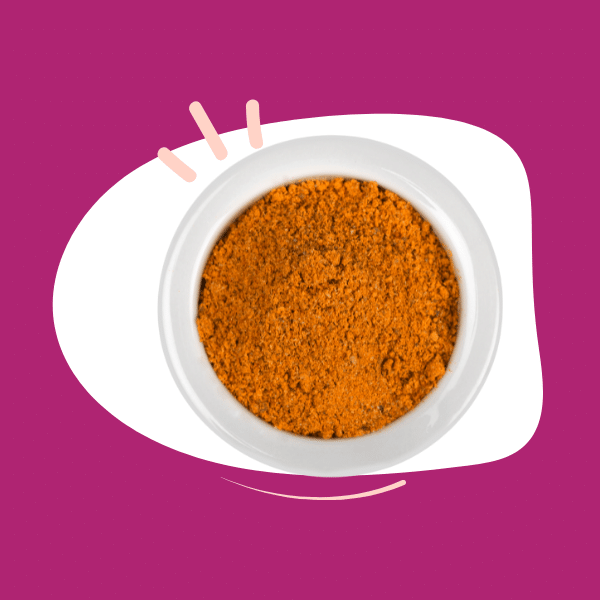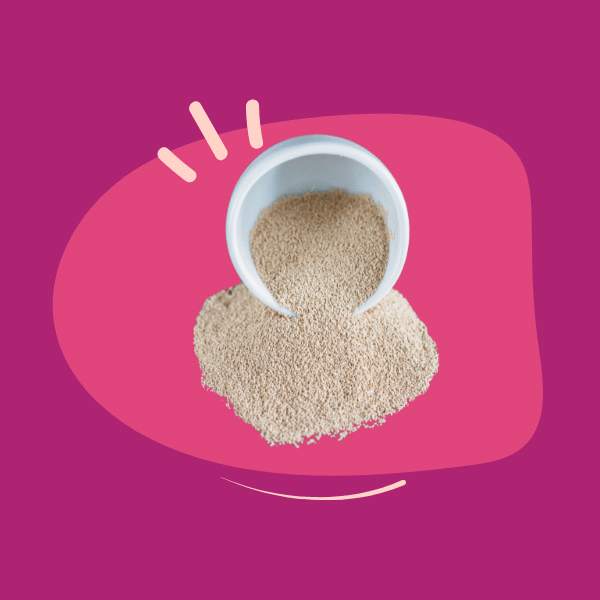Green tea (Camellia sinensis) is one of the most popular beverages in the world. It has been considered a healthy beverage since ancient times. In Traditional Chinese Medicine (TCM), the green tea plant has been recommended for headaches, body aches, general pain, digestion, and depression, as an energizer, and in general, to prolong life.1
Green tea has received remarkable attention because of its various beneficial effects that are backed by scientific research.
The polyphenols in green tea play a vital role in alleviating and/or preventing health issues that commonly affect dogs and cats, particularly arthritis and other joint problems, periodontal disease (tooth and gum problems), cancer, obesity, cardiovascular conditions, liver disease, diabetes, and specific age-related issues. Green tea also has antibacterial, antiviral, and antifungal activity.2
What are the components of green tea?
The chemical composition of green tea is complex. It contains proteins, carbohydrates, minerals and trace elements, lipids, sterols, vitamins, xanthic bases, pigments, and volatile compounds.
The significant components of interest in green tea are the polyphenols, the majority of which are classified as flavonoids. The four major flavonoids in green tea are the following:
- Epicatechin gallate (ECg)
- Epicatechin (EC)
- Epigallocatechin (EGC)
- Epigallocatechin gallate (EGCG)
Among the four flavonoids, Epigallocatechin gallate is viewed as the most significant active component.3Other components that play a vital role in the beneficial effects of green tea include carotenoids, ascorbic acid, tocopherols, caffeine, and minerals like zinc, chromium, selenium, and magnesium
Table 1. Catechins In Green Tea
|
Catechins |
Percentage |
|
Epicatechin gallate (ECg) |
13.6 |
|
Epicatechin (EC) |
6.4 |
|
Epigallocatechin (EGC) |
19 |
|
Epigallocatechin gallate (EGCG) |
59 |
Source: McKay DL, Blumberg JB. The role of tea in human health: an update. J Am Coll Nutr. 2002;21:1–13.
Medical benefits of green tea
Green tea promotes joint health
Several factors have been implicated in the development of chronic joint diseases in both humans and animals. Inflammation and oxidative stress are among the top factors on the list.
Epigallocatechin-3-gallate (EGCG) in green tea has been extensively studied for its effects on joint health, particularly osteoarthritis and rheumatoid arthritis. These are inflammatory disorders that affect the bones and tissues of the joints resulting in structure degeneration and progressive joint dysfunction.
There is considerable evidence that EGCG, the predominant green tea polyphenol, inhibits enzyme activities and signal transduction pathways that play essential roles in inflammation and joint destruction in arthritis.4
Scientific studies show that EGCG in green tea is primarily responsible for the following effects:6
- Protection of the joint cartilage
- Bone-preserving activity
- Regulation of the activity of synovial cells (fibroblasts)
- Reduced incidence and severity of collagen-induced arthritis (CIA) in mice
- Limit overall inflammation and joint destruction
In many animal model studies, green tea and polyphenol extracts have been demonstrated to inhibit the development of arthritis and the inflammatory responses associated with the condition.
Green tea protects the cartilage by blocking the enzyme that destroys cartilage. The very key to this is the high fluoride content found in green tea. It helps to keep bones strong and helps to preserve density of the bone.5
The chondroprotective properties prevent degradation of the cartilage matrix in the joint cartilage. These benefits are attributed to the rich antioxidant capacity and anti-inflammatory action of EGCG.
Considering that arthritis is primarily age-related and progressive, early initiation of life-long treatment coupled with symptom control is critical to maintaining joint and skeletal muscle health. Complementing this regimen with nutraceuticals (such as green tea) has been shown to mitigate pain, maintain joint mobility, and improve physical functional capacity for patients with osteoarthritis.3
Animal-based studies
Several animal-based studies also demonstrated the chondroprotective properties of EGCD in green tea. In one study, the supplementation of green tea in drinking water significantly reduced the incidence of collagen-induced arthritis in mice.8
In a 2014 study9, EGCG significantly slowed progression in early- and midstage osteoarthritis development, as indicated by higher locomotor behavior.
In a recent study using a mouse model with surgically-induced osteoarthritis, researchers reported EGCG in hyaluronic acid protects cartilage from physical abrasion in arthritic joints, inflammation, and “wear-and-tear”.10
Green tea supports dental health
Periodontal disease is a prevalent health problem in dogs and cats. Alveolar bone resorption, dental caries, halitosis (bad breath), gingivitis, and other conditions affecting the teeth and gums can adversely affect your pet’s quality of life. Dental disease can also pave the way for serious health issues when bacteria from the mouth enter the bloodstream to reach major organs of the body where they initiate disease.
Green tea promotes periodontal health by reducing inflammation, preventing bone resorption, and limiting the growth of certain bacteria associated with periodontal diseases.5
Catechins in green tea inhibit the growth of Porphyromonas gingivalis, Prevotella intermedia and Prevotella nigrescens, and adherence of P. gingivalis on to human buccal (mouth) epithelial cells. These pathogens are known microbial persisters in the mouth with extreme tolerance to various antimicrobials. They have been associated with severe tooth loss in humans.11
Halitosis or bad breath is caused mainly by volatile sulfur compounds (VSCs) such as H2S and CH3SH produced in the oral cavity. Aside from potent antimicrobial effects, polyphenols in green tea have also been shown to have deodorant effects.
In a study that compared the effect of green tea, toothpaste, mints, chewing gum, and parsley-seed oil on bad breath, green tea showed the largest reduction in the concentration of both H2S and CH3SH gases. The result showed that green tea can temporarily reduce mouth odor because of its disinfectant and deodorant activities.5
In vitro studies have also shown that green tea polyphenols inhibit the growth of periodontal pathogens, prevent their adherence to tissues in the mouth, as well as block their production of virulence factors.
Oxidative stress also plays an important role in the development of periodontal disease. Antioxidants in green tea help defend against inflammation associated with gingivitis and other dental conditions.
Green tea possesses anticancer and antioxidant effects
Several epidemiologic and experimental observations have confirmed a close relationship between green tea consumption and the prevention of cancer development and cardiovascular disease. The most abundant catechin in green tea, epigallocatechin-3-gallate, is thought to play a pivotal role in green tea’s anticancer and antioxidant effects.5 Green tea has been demonstrated to inhibit degenerative changes brought about by the action of free radicals in the body.
Several tumor types are inhibited by green tea, including cancers of the stomach, gall bladder, prostate, uterus, lung, intestine, colon, rectum, and pancreas. Green tea also inhibits breast cancer by binding to estrogen receptors, making it of potential value in treating mammary gland cancer in small animals.12
Other benefits of green tea
The antioxidant activity of catechins in green tea may also reduce inflammatory conditions affecting the liver and gastrointestinal tract. Thus, green tea can also provide potential benefits for dogs and cats suffering from enteritis and hepatitis.
Dr. Merliza Cabriles

Dr. Merliza Cabriles is a Licensed Veterinarianand a University Professor with many years of experience in food animal and pet companion medicine. Her passion for writing and pet parent education and support are echoed in the articles she has written for various websites in the pet niche, including bestie’s! She enjoys cultivating positive relationships with her clients and dedicates her time to educating and supporting pet parents in providing the best care for their pets.In her spare time, she enjoys trekking and traveling.
List of References
- Carmen C, Reyes A, Rafael G. Beneficial Effects of Green Tea- A Review. Journal of the American College of Nutrition. 2006;25:79–99.
- Babu Venkateswara, K. Sirisha, and Vijay K. Chava. Green tea extract for periodontal health - PMC (nih.gov). J Indian Soc Periodontol. 2011 Jan-Mar; 15(1): 18–22. doi: 10.4103/0972-124X.82258
- Robert L.Pastore and Patrick Fratellone.Potential Health Benefits of Green Tea (Camellia sinensis): A Narrative Review. EXPLORE Volume 2, Issue 6, November 2006, Pages 531-539. https://doi.org/10.1016/j.explore.2006.08.008
- Rashmi Singh, Nahid Akhtar, Tariq M. Haqqi. Green tea polyphenol epigallocatechi3-gallate: Inflammation and arthritis. Life Sciences Volume 86, Issues 25–26, 19 June 2010, Pages 907-918. https://doi.org/10.1016/j.lfs.2010.04.013
- Anirban Chatterjee and Mini Saluja. Green tea: A boon for periodontal and general health. April 2012. Journal of Indian Society of Periodontology 16(2):161-7DOI:10.4103/0972-124X.99256
- Salahuddin Ahmed. Green tea polyphenol epigallocatechin 3-gallate in arthritis: progress and promise. Arthritis Res Ther12, 208 (2010). https://doi.org/10.1186/ar2982
- Hui-Ying Luk et al. Impacts of Green Tea on Joint and Skeletal Muscle Health: Prospects of Translational Nutrition. Antioxidants2020, 9(11), 1050; https://doi.org/10.3390/antiox9111050
- Haqqi, T.M.; Anthony, D.D.; Gupta, S.; Ahmad, N.; Lee, M.-S.; Kumar, G.K.; Mukhtar, H. Prevention of Collagen-Induced Arthritis in Mice by a Polyphenolic Fraction from Green Tea. Natl. Acad. Sci. USA1999, 96, 4524–4529.
- Leong, D.J.; Choudhury, M.; Hanstein, R.; Hirsh, D.M.; Kim, S.J.; Majeska, R.J.; Schaffler, M.B.; Hardin, J.A.; Spray, D.C.; Goldring, M.B. Green Tea Polyphenol Treatment Is Chondroprotective, Anti-Inflammatory and Palliative in a Mouse Posttraumatic Osteoarthritis Model. Arthritis Res. Ther.2014, 16, 1–11.
- Jin, Y.J.; Koh, R.H.; Kim, S.-H.; Kim, K.M.; Park, G.K.; Hwang, N.S. Injectable Anti-Inflammatory Hyaluronic Acid Hydrogel for Osteoarthritic Cartilage Repair. Sci. Eng. C2020, 115, 111096.
- Chuan Wang, Xuan Li, Tianfan Cheng, Hongzhe Sun, and Lijian Jin. Eradication of Porphyromonas gingivalis Persisters Through Colloidal Bismuth Subcitrate Synergistically Combined With Metronidazole. Front Microbiol.2021; 12: 748121. doi: 3389/fmicb.2021.748121
- Steve Marsden, Shawn Messonnier, and Cheryl Yuill. Black and Green Tea. https://vcahospitals.com/know-your-pet/black-and-green-tea. Date accessed: 15 April 2023.

















